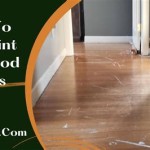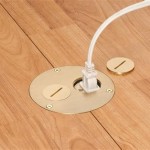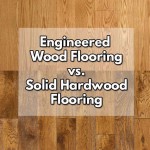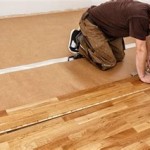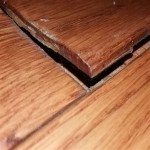Full Length Floor Mirror with Wood Frame: An Overview
Full length floor mirrors, particularly those encased in wood frames, are ubiquitous fixtures in homes, fitting rooms, and retail environments. Their popularity stems from a combination of functionality and aesthetic appeal. This article will explore the various aspects of full length floor mirrors with wood frames, encompassing their design variations, material considerations, practical applications, and considerations for selection and maintenance.
The primary function of a full length floor mirror is to provide a complete reflection of the individual standing before it. This is critical for assessing one’s overall appearance, from head to toe, making it an indispensable tool for dressing, grooming, and evaluating outfits. The full length aspect allows for a comprehensive view that smaller mirrors simply cannot offer. The addition of a wood frame enhances both the visual appeal and the structural integrity of the mirror.
Design Variations and Styles
Wood-framed full length floor mirrors are available in a wide array of designs and styles, catering to diverse aesthetic preferences and interior design schemes. These variations are largely determined by the profile and finish of the wooden frame itself. Consider the following design archetypes:
Traditional Styles: Often characterized by ornate detailing, these frames may feature carved accents, intricate moldings, and a rich, dark finish. Mahogany, cherry, or walnut wood are frequently used, lending a sense of timeless elegance. Traditional frames can evoke a feeling of classic sophistication, complementing period homes or spaces with a vintage aesthetic.
Modern Styles: Modern frames are typically streamlined and minimalist, emphasizing clean lines and geometric shapes. They often feature lighter wood tones, such as maple or birch, or are painted in neutral colors like white, black, or gray. Modern mirrors seamlessly integrate into contemporary interiors, offering a subtle yet stylish accent without overpowering the space.
Rustic Styles: Rustic frames embrace natural textures and imperfections, often incorporating reclaimed wood or wood with visible knots and grain patterns. These frames may be finished with a distressed look or a matte varnish, highlighting the wood's inherent character. Rustic mirrors bring a touch of the outdoors in, creating a warm and inviting atmosphere in homes with farmhouse or bohemian decor.
Bohemian Styles: Bohemian styles often incorporate unique and eclectic elements, such as carved patterns, inlaid details, or vibrant colors. These frames might feature reclaimed wood, distressed finishes, and unconventional shapes to reflect a free-spirited and artistic aesthetic. They often act as focal points, adding personality and individuality to a room.
Scandinavian Styles: Minimalist and functional designs are common traits. These frames typically use light wood tones like beech or ash and focus on clean lines and simple shapes. Scandinavian mirrors blend seamlessly with minimalist decor, offering a sense of tranquility and natural beauty to the room.
Beyond these broad categories, there are numerous sub-styles and variations, allowing consumers to find a mirror that perfectly complements their personal taste and the overall design of their space. Elements like frame width, corner detailing, and the presence of decorative accents all contribute to the overall aesthetic.
Material Considerations: Wood Types and Finishes
The choice of wood and finish significantly impacts the appearance, durability, and cost of a full length floor mirror. Different wood types offer varying degrees of hardness, grain patterns, and natural color tones. Understanding these characteristics is crucial for making an informed decision.
Hardwoods: Hardwoods, such as oak, maple, cherry, and walnut, are known for their durability and resistance to dents and scratches. They offer a wide range of grain patterns and color variations, making them suitable for both traditional and modern designs. Hardwoods tend to be more expensive than softwoods, but their longevity and aesthetic appeal often justify the investment.
Softwoods: Softwoods, such as pine, fir, and cedar, are more affordable and easier to work with than hardwoods. They are often used in rustic and casual designs, where imperfections and natural textures are embraced. While softwoods are less resistant to damage, they can be treated with sealants and finishes to enhance their durability.
Engineered Wood: Materials like MDF (Medium-Density Fiberboard) or plywood are sometimes used for mirror frames, especially in more budget-friendly options. These materials offer consistent density and are less prone to warping or cracking compared to solid wood. They are often used as a base for veneers or paint finishes, providing a smooth and uniform surface.
In addition to the wood type, the finish applied to the frame plays a crucial role in its appearance and protection. Common finishes include:
Stains: Stains penetrate the wood, enhancing its natural grain and color. They come in a variety of shades, from light and natural to dark and rich. Stains can be used to achieve a traditional, rustic, or modern look, depending on the chosen color and application technique.
Paints: Paints provide a solid, opaque color that completely covers the wood grain. They are available in a wide range of colors and finishes, from matte to glossy. Paints are often used in modern and contemporary designs, allowing for bold and vibrant color choices.
Varnishes and Lacquers: These clear coatings provide a protective layer that enhances the wood's natural beauty and protects it from scratches, moisture, and UV damage. They come in a variety of sheens, from matte to high-gloss, and can be used to achieve a durable and long-lasting finish.
The selection of wood type and finish should be based on the desired aesthetic, budget, and intended use of the mirror. Considerations such as the room's humidity level and the potential for wear and tear should also be taken into account.
Practical Applications and Considerations
Full length floor mirrors with wood frames serve a variety of practical purposes beyond simply providing a reflection. Their strategic placement can enhance the perceived size and light of a room, while their aesthetic appeal can contribute to the overall ambiance.
Enhancing Space and Light: Placing a full length mirror strategically can create the illusion of more space, particularly in smaller rooms. By reflecting the existing light, the mirror can brighten up dark corners and make the room feel more open and airy. Positioning the mirror opposite a window or light source will maximize its reflective capabilities.
Dressing and Grooming: The primary function of a full length mirror is to provide a complete view for dressing and grooming. This is especially important for assessing outfits, applying makeup, or styling hair. Placement in a bedroom, dressing room, or bathroom is ideal for these purposes.
Decorative Accent: A full length mirror can serve as a decorative accent, adding visual interest and style to a room. The choice of frame design and finish can complement the existing decor, enhancing the overall aesthetic. Consider using the mirror to create a focal point or to balance the composition of a room.
Health and Posture: Beyond fashion, a full-length mirror can also be a useful tool for assessing posture and overall physical alignment. This can be beneficial for individuals working on their fitness or maintaining a healthy posture.
When selecting a full length floor mirror, several practical considerations are important. The size of the mirror should be appropriate for the space in which it will be placed. The frame should be sturdy and well-constructed to ensure the mirror's stability and longevity. The mirror glass itself should be of high quality, providing a clear and undistorted reflection. Finally, consider the safety aspects, such as whether the mirror has a safety backing to prevent shattering in case of breakage.
Maintenance is also a key consideration. Regular cleaning with a soft cloth and glass cleaner will help to keep the mirror looking its best. Avoid using abrasive cleaners or harsh chemicals, as they can damage the mirror's surface or the frame finish. Inspect the frame regularly for any signs of damage or wear, and address any issues promptly to prevent further deterioration.
In conclusion, selecting the right full length floor mirror with a wood frame involves careful consideration of design styles, material options, and practical applications. By understanding these factors, individuals can choose a mirror that not only serves its functional purpose but also enhances the beauty and functionality of their living space.

Neutype 28 In W X 67 H Classic Arch Top Wood Framed Dark Walnut Full Length Floor Mirror Sm Mr04015 The Home

Neutype 21 In W X 64 H Classic Arch Top Wood Framed Dark Walnut Full Length Floor Mirror Sm Mr04011 The Home

Herringbone Floor Mirror Full Length Decorative Rustic Wood Frame Leaning Shown In Special Walnut Available 20 Colors Etsy

Neutype 28 In W X 67 H Classic Arch Top Wood Framed Brown Full Length Floor Mirror Sm Mr04018 The Home

Barnyard Designs 24x58 Leaner Floor Mirror Full Length Large Rustic Wall Free Standing Leaning Hanging Wood Size Farmhouse Decor Long Bedroom Living Room Brown Wal Com

Neutype 64 X21 Full Length Mirror Floor Wood Frame Rectangular Hanging Wall Log Color Wal Com

Neutype 21 In W X 64 H Classic Arch Top Wood Framed Brown Full Length Floor Mirror Sm Mr04010 The Home

White Mirror For Studio Full Length Wall Body Floor With Faux Wood Frame Large Standing Living Room By Naomi Home

Rustic Wood Oversized Full Length Floor Mirror

Free Shipping On Boho Arch Full Length Floor Mirror Rattan Standing Wood Frame 67 X 29 Homary Spiegel Holz Innenarchitektur Schlafzimmer
See Also
